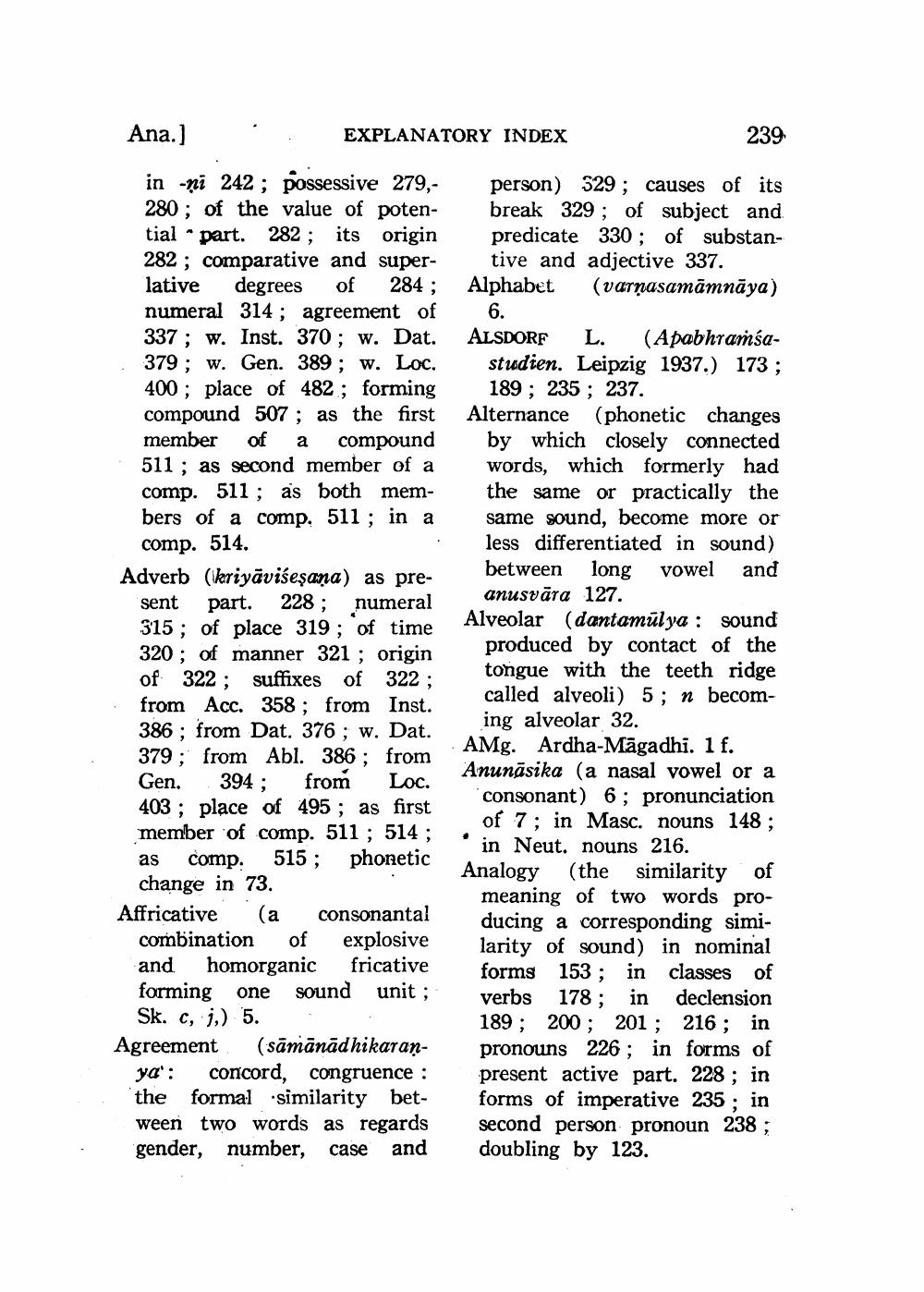________________
Ana.)
EXPLANATORY INDEX
239
in-ni 242 ; possessive 279,- person) 529; causes of its 280 ; of the value of poten- break 329; of subject and tial - part. 282 ; its origin predicate 330; of substan282; comparative and super- tive and adjective 337. lative degrees of 284; Alphabet (varnasamāmnāya) numeral 314 ; agreement of 6. 337 ; w. Inst. 370 ; w. Dat. ALSDORF L. (Apabhrarsa379; w. Gen. 389; w. Loc. studien. Leipzig 1937.) 173; 400; place of 482 ; forming 189; 235 ; 237. compound 507 ; as the first Alternance (phonetic changes member of a compound by which closely connected 511; as second member of a words, which formerly had comp. 511; as both mem- the same or practically the bers of a comp. 511 ; in a same sound, become more or comp. 514.
less differentiated in sound) Adverb (kriyāvišeşana) as pre
between long vowel and sent part. 228; numeral
anusvāra 127. 315; of place 319; of time
Alveolar (dantamülya : sound 320 ; of manner 321 ; origin
produced by contact of the of 322 ; suffixes of 322 ;
tongue with the teeth ridge from Acc. 358 ; from Inst.
called alveoli) 5; n becom386 ; from Dat. 376 ; w. Dat.
ing alveolar 32.
· AMg. Ardha-Māgadhi. 1 f. 379; from Abl. 386; from Gen. 394 ; from Loc.
Anunāsika (a nasal vowel or a 403 ; place of 495 ; as first
consonant) 6; pronunciation
of 7; in Masc. nouns 148; member of comp. 511; 514 ;
in Neut. nouns 216. as comp. 515 ; phonetic
Analogy (the similarity of change in 73.
meaning of two words proAffricative (a consonantal
ducing a corresponding simicombination of explosive
larity of sound) in nominal and homorganic fricative
forms 153; in classes of forming one sound unit ;
verbs 178; in declension Sk. c, j,) 5.
189; 200; 201 ; 216 ; in Agreement (sāmānādhikaran- pronouns 226; in forms of
ya': concord, congruence : present active part. 228; in the formal similarity bet- forms of imperative 235 ; in ween two words as regards second person pronoun 238 ; gender, number, case and doubling by 123.




